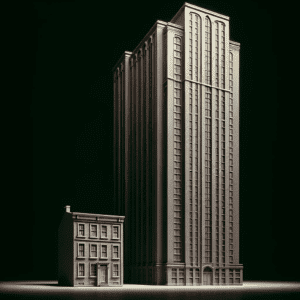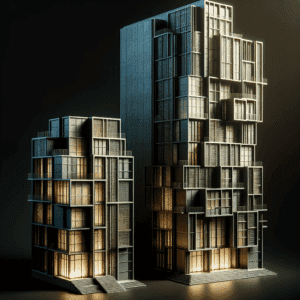Find out if you're spending too much on your structure. Click here to get started.
How is a high-rise defined?
The International Building Code (IBC) defines a high-rise building as a building with an occupied floor located more than 75 feet above the lowest level of fire department vehicle access. This definition is primarily based on the height at which firefighting operations from the ground become less effective.
The measurement of 75 feet is typically taken from the lowest level of fire department vehicle access to the floor of the highest occupiable story. The significance of this height is that it presents unique challenges for fire safety, structural engineering, and evacuation procedures, which are distinct from those in lower buildings.
As usual, building codes are ever evolving and being updated, it’s always a good practice to refer to the latest version of the IBC or consult with a local building authority for the most current definitions and requirements.
Are there any exceptions?
Yes.
-
Massachusetts
- Definition – A building more than 70 feet in height above grade plane.
- Measured from – Average grade plane NOT lowest level of fire department access
- Measured to – The roof structure NOT the lowest level of the highest occupied floor
- Impact – Typically trigger high rise requirements 1-story sooner than the IBC definition
-
Chicago
- Definition – A building more than 80 feet in building height.
- Measured from – Average grade plane NOT lowest level of fire department access
- Measured to – The mean elevation of the highest roof plane NOT the lowest level of the highest occupied floor
- Impact – Can trigger high rise requirements 1-story sooner than the IBC definition
-
Michigan
- Definition – A building with an occupied floor located more than 55 feet above the lowest level of fire department vehicle access.
- Measured from – Lowest level of fire department access. Same as IBC.
- Measured to – Highest occupied floor. Same as IBC.
- Impact – Typically trigger high rise requirements 1-2 stories sooner than the IBC definition
-
Nevada
- Definition – A building with an occupied floor located more than 55 feet above the lowest level of fire department vehicle access.
- Measured from – Lowest level of fire department access. Same as IBC.
- Measured to – Highest occupied floor. Same as IBC.
- Impact – Typically trigger high rise requirements 1-2 stories sooner than the IBC definition
Download Full Mid-rise PDF Now



